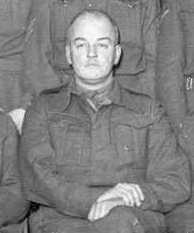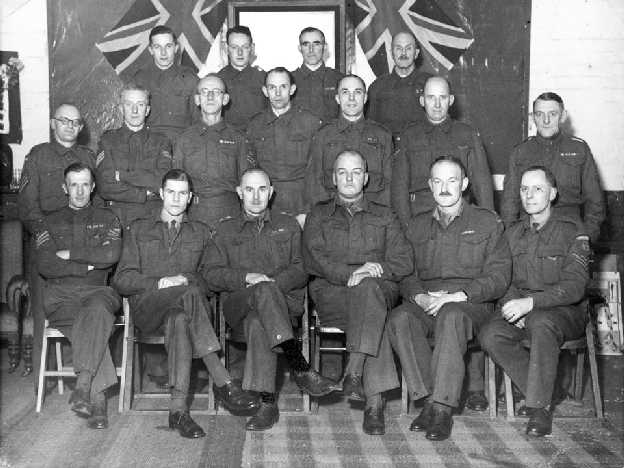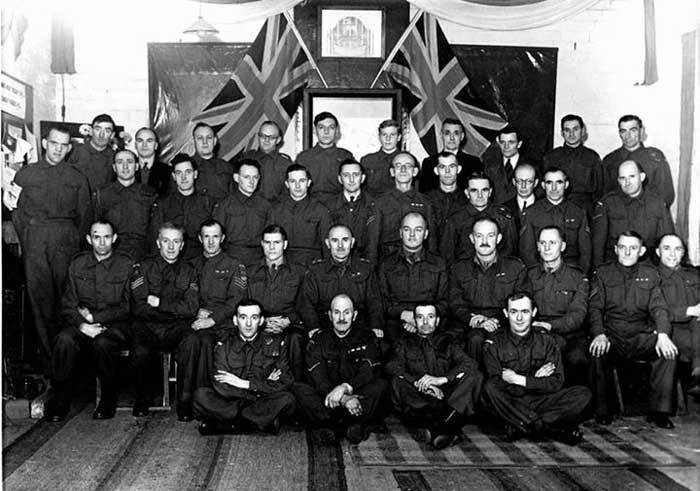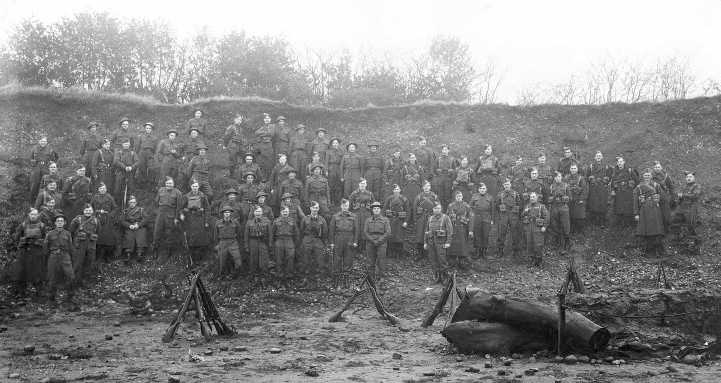MEMORIES
AND INFORMATION - WARWICKSHIRE
SUTTON
COLDFIELD HOME GUARD
and
Captain
J. R. BROSCH
This
is a page within the www.staffshomeguard.co.uk
website. To
see full contents, go to SITE
MAP.
|
Captain
John Reardon Brosch
(1894-1964) was
a member of Sutton Coldfield Home Guard, the
6th Warwickshire
(Sutton) Battalion commanded by
Lt. Col. W. Bigwood, M.C.
of Four Oaks. 
In his private life Capt. Brosch was involved
from about 1912 in metal manufacture as
J. Reardon &
Co. The printed Company name was J. Reardon & Co,
Metal Manufacturers, Nickel Silver Works, located in Birmingham.
Some time about 1918 J. Reardon & Co. was absorbed
into John E. Mapplebeck. The latter Company, after WW1,
used the Spade Mill (in the dam of
Powells Pool, Sutton
Park) for rolling, until - it is said - a labourer stopped
the water wheel, not by closing the sluice, but shoving
a timber into the wheel, thus ending water powered rolling.
Captain Brosch
lived with his wife, Marjorie Ellen, and their children,
Veronica (Bunty), Sheila, John and Richard, initially
in Goldieslie Road and later, including the war years,
in Little Sutton Lanes, off the
Lichfield Road.
Through the generosity of his grandson,
Mr. Andy Diss, we are able to show below various pictures
of the Sutton Home Guard. In the first, in an unknown
indoor location but decked out in patriotic fashion, Capt.
Brosch is seated fourth from the left in the front row.
As ever, the number of men bearing Great War ribbons is
noteworthy. The formation of the group is interesting
as well: there are as many officers and NCOs as there
are privates and one has to wonder whether this group
of men had a specialist Battalion-wide function - Signals
for instance - rather than being a standard platoon or
section.

Click
on the image to see a higher definition version.
Front row: third from left,.
Lt.
Rupert L. Thomas; fourth,
Captain
J.R. Brosch, sixth, -
Wightman/Whiteman.
Middle row: fourth from left,
Fred
Norton.
The location
is not known for certain. One unit with which Capt. Brosch
was involved used to meet in the pro's hut at
Moor Hall
Golf Club, where, it is rumoured, more than one Home Guard
holed out in the roof during rifle cleaning. On the other
hand Lt. R.L. Thomas
was known to frequent one local HQ which was in a disused
pub on the corner of Tamworth Road and
Reddicap Heath
Road.
A second similar image shows the same
group of men with others having joined them - same
occasion, same location.

The third image is of a larger group
of men, obviously engaged in an exercise of a type described
in the 32nd (Aldridge) Battalion pages of this website.
Again the location is unknown although
Sutton Park, a
regular training ground for this and adjacent battalions,
has to be a strong possibility. It is obviously winter
and here we have a group of men pausing for a few moments
during a Saturday or Sunday - or even whole weekend -
training exercise. They will be regularly sacrificing
much of their spare time in the defence of the town and,
if they are in manufacturing, probably working a 50-60
hour week at their normal job as well. Capt. Brosch is
standing in the middle of the front row of this group
and is wearing a tin hat.

Click
on the image to see a higher definition version.
The only partipitant identified with certainty is
Capt. J.R. Brosch,
sixth from the left in the line of officers at the front
of the picture.
Lt. R.L. Thomas
may be the officer third from the left in this row and
Lt. H.A. Pearce
fourth, but we cannot be certain.
An expert opinion has
been sought on some of the detail within this picture
and is the basis of the following comments. The image's
probable date is early winter 1942. This is based on the
absence of Sten guns which were only widely available
in reasonable numbers during 1943; and on the presence
of various insignia which started to appear in quantity
in late 1941. The number of men involved suggests that
they were members of one or two companies of the 6th Warwickshire.
The disparity of uniform and kit is noticeable - men in
just battledress, others in greatcoats, some with pouches
and webbing, tin hats in some cases and forage caps in
others. None of this gives a clear indication of the form
of the exercise. Its location seems to be within some
sort of pit - could it have been, at least partly, rifle
training? The Musketry Instructor,
Lt.
H. Pearce, appears to be present.
It is hoped that more men will be recognisable
with reasonable certainty, perhaps including one or two
of those who are remembered in words alone elsewhere
in the website. Use the higher definition versions of
the images to aid recognition. And please use FEEDBACK
if you are able to comment on identities, location or
activity.